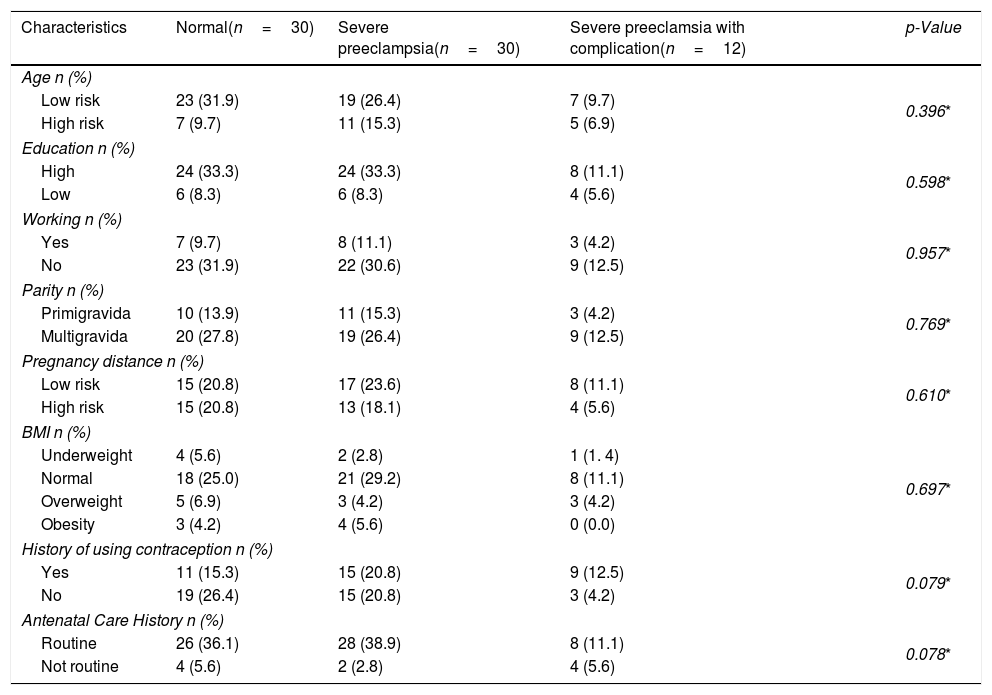This study aims to compare serum magnesium levels of normal pregnant women, severe preeclampsia and severe preeclampsia with complications in the third trimester of pregnancy so that they can be used as a basis for earlier consideration of supplementation in pregnancy.
MethodThis study was an observational study with a comparative cross-sectional design conducted in July–September 2019 in four hospitals in Makassar, namely Dr. Wahidin Soedirohusodo General Hospital, Hasanuddin University State University Hospital, Sitti Khadijah I Hospital and Children Hospital Siti Fatimah's Mother and Child Hospital. Respondents in this study were three-trimester pregnant women who were divided into three groups, 30 mothers with normal pregnancies, 30 mothers with severe preeclampsia, and 12 women with severe preeclampsia with complications. Criteria for respondents in this study were single pregnancy and not with systemic disease. Data collected included age, education, occupation, body mass index (BMI) before pregnancy, parity, the distance of pregnancy, history of preeclampsia, family planning history, history of antenatal care examination and pregnancy planning. Serum magnesium levels were determined using a Magnesium Assay Kit with a colorimetric method that was assessed for absorption by spectrophotometrics.
ResultsThe mean serum magnesium levels were the lowest in the severe preeclampsia group (0.61mmol/L) compared to the severe preeclampsia group with complications (0.72mmol/L), and the normal pregnancy group (0.92mmol/L). Magnesium levels of the three groups differed significantly (p=0.008, p<0.05)
ConclusionSerum magnesium levels should be considered as a prognostic factor and supplementation intervention for pregnant women with preeclampsia.








